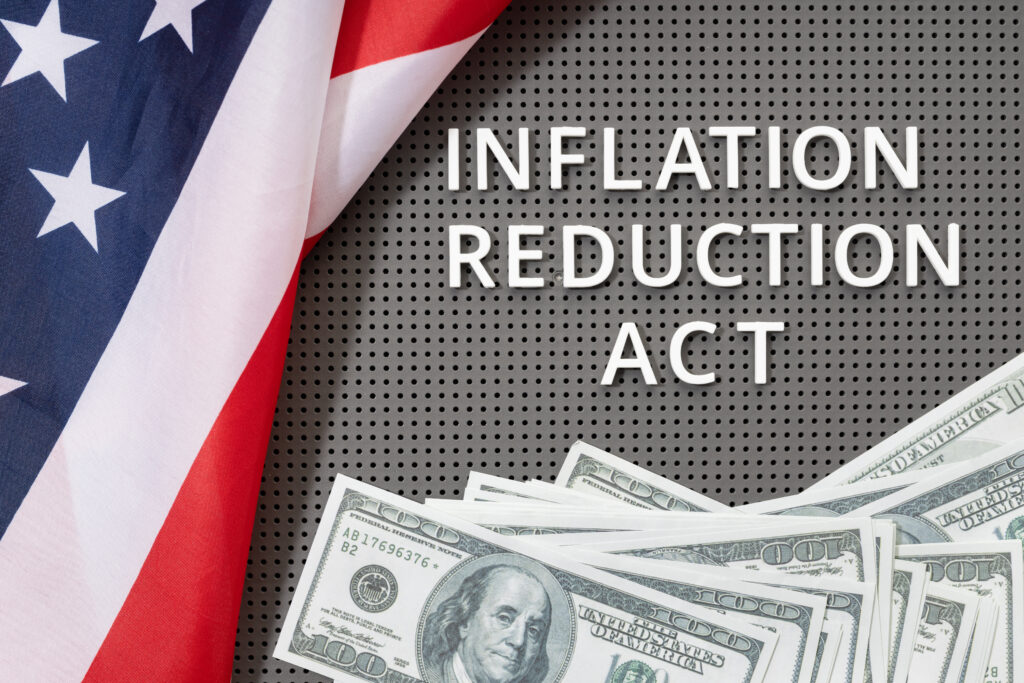Climate change has been a topic of discussion in the United States for decades. Congress has debated the issue for roughly 30 years — with varying results.
A notable outcome of those discussions is Renewable Energy Tax Credits, Investment Tax Credits (ITCs) designed to facilitate the adoption of clean energy. These energy efficiency tax credits were established through the Energy Policy Act (EPACT) of 2005.
Expansion of Renewable Energy Tax Credits
When the EPACT was signed into law in August 2005, it created the principal 30 percent tax credit for investments in solar energy property with a cap of $2,000. Although it was initially set to expire at the end of 2006, it has been extended multiple times since through legislation such as the Tax Relief and Health Care Act (TRHCA) of 2006, the Emergency Economic Stabilization Act (EESA) of 2008 and, more recently, the Inflation Reduction Act (IRA) of 2022.

In addition to extending this renewable energy ITC for eight years, the EESA eliminated the $2,000 cap for residential solar installations and allowed utilities and businesses paying the alternative minimum tax (AMT) to qualify for the tax credit. The credit percentage dropped to 26 percent in 2020, but the IRA brought it back up to 30 percent, at which it is scheduled to remain through 2032.
Pre-IRA Tax Equity Structures
Prior to the IRA, tax equity investment for renewable energy, including solar, required complex legal structures and arrangements, like sale-leasebacks, partnership flips and inverted leases. Created to allocate the ITC to the tax investor and the cash to the cash investor as efficiently as possible, each structure raises a different amount of tax equality, allocates risk diversely and institutes a deadline by when the tax equity investor is required to fund its investment.
With the sale-leaseback arrangement, a solar project developer sells it to a tax equity investor, who then leases it back from the investor. The more common partnership flip occurs when a developer forms a partnership with a tax equity investor and allocates a majority of the taxable income and loss to the investor for a predetermined period or until a fixed return target is achieved. Typically, a developer has the option to purchase the investor’s interest in the partnership on or after the date of the flip.
The inverted lease model, also referred to as a solar lease pass-through, is primarily utilized in the rooftop solar market. In this structure, a tax equity investor leases a project from a solar developer. The developer not only continues to own and operate the project but also retains depreciation deductions to offset the rental income. Also, the ITC is passed through to the tax-equity investor, allowing the developer to retain some ownership and tax benefits (MACRS).
In such structures, tax equity investors typically fund 40 percent of the purchase price of the solar panels or the overall cost of the project. The result is that they’re in turn entitled to part ownership and 100 percent tax benefits
These tax equity investment credits just a few years ago were dominated by large banks. JP Morgan and Bank of America supplied roughly half of tax equity in 2020.
Impact of the Inflation Reduction Act
According to the U.S. Environmental Protection Agency (EPA), taking advantage of Inflation Reduction Act tax credits is paramount to lowering greenhouse gas emission footprints and accelerating the transition to clean energy. That’s because the IRA makes ITCs available to qualified buyers through a simple transfer. Such tax credits are available to taxable business entities and specified tax-exempt entities eligible for direct payment of the ITCs.
How exactly does a renewable energy tax credit work? It starts with a developer building a renewable energy property. The typical basis for the credit is 30 percent of the fair market value (FMV). But, the credit can be higher if the project qualifies for more adders.
As the project nears completion, the ITC can be sold by the developer to a qualified buyer, who often purchases the tax credit at anywhere from 70- 95 percent of its value. The tax credit then is transferred from the seller to the buyer, who uses it against their taxes.
Example:
A solar project with an FMV of $10 million has a credit worth $3 million. A buyer offers 90 percent of FMV for the credit and purchases it from the solar developer for $2.7 million. The buyer then uses the $3 million credit against his or her taxes, resulting in a savings of $300,000.

Since the Inflation Reduction Act became effective in 2023, U.S. solar and storage companies have announced more than $100 billion in new private sector investments, and 155 gigawatts (GW) of new production capacity has been announced across the solar supply chain. By 2033, the U.S. will have installed 669 GW of total solar capacity, more than four times the amount installed today.
How Does a Renewable Energy Tax Credit Transfer Work?
The transferability feature ushered in through the IRA enables renewable project owners and developers to sell all or part of their renewable energy tax credits for cash. Buyers of these credits can expect to purchase them at a discount of anywhere from five to 30 percent of their value. Renewable energy tax credits can be carried forward for 22 years and back for three.
After purchasing renewable energy tax credits, buyers can use them to offset their tax liability in a year by up to 75 percent. There are credit transfer requirements, including:
- Credits must be exchanged for cash with an unrelated party.
- Credits are limited to a single transfer.
- The seller can only sell tax credits to which they are entitled.
- A transferee may not resell.
Any entity defined by the Internal Revenue Service as an eligible taxpayer, from individuals to corporations, can benefit from the transferability of these tax credits. However, renewable energy tax credits are subject to the IRS’ passive activities rules, tax regulations that prohibit taxpayers from using passive losses to offset earned or ordinary income. That means that to be classified as a qualified buyer, an entity must only apply the value of its ITC to offset tax liabilities from passive (non-investment) income. And, the sale proceeds aren’t passive income to the seller.
Also, buyers are not treated as materially participating in the seller’s trade or business. As a result, the ITCs are treated as passive activity credits to the buyer.

Are There Risks in Buying Renewable Energy Transferable Tax Credits?
As with most investments, there is some risk in purchasing these tax credits, although minimal. For example, ITCs are subject to recapture if a project is removed from service within the first five years after it is placed in service — or if there is a change in ownership. Another risk is that the IRS could audit and challenge the amount of ITC claimed on a project.
To mitigate these risks, it is essential that buyers conduct due diligence on their ITC purchase. Doing so will help avoid additional penalties if the IRS determines excess tax credits were taken.
The best ways to reduce renewable energy tax credit purchase risks are to invest in corresponding insurance products and employ the services of a knowledgeable intermediary such as REOX. In addition to ensuring that all necessary due diligence is conducted to verify the legitimacy of the tax credits and the project, we at REOX help both parties understand the terms of the transaction, address any questions or concerns and work toward a mutually beneficial agreement. Contact us today to get started!


